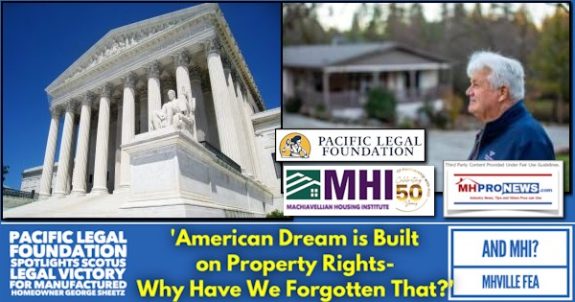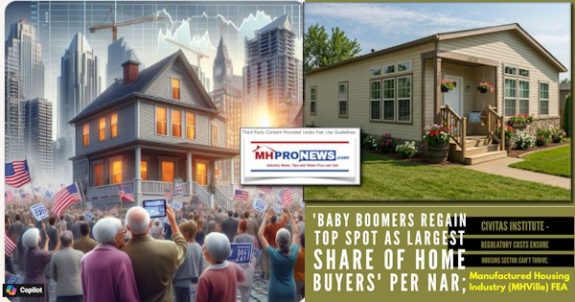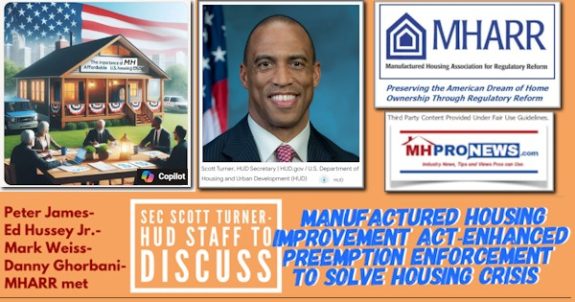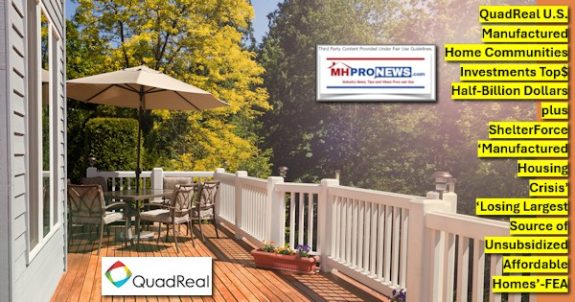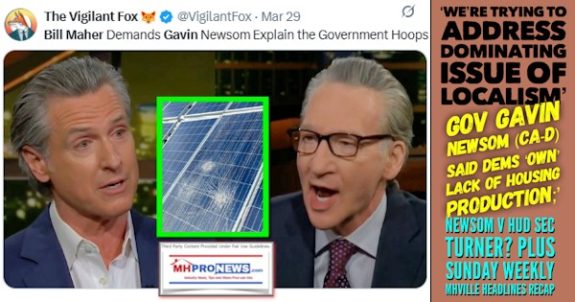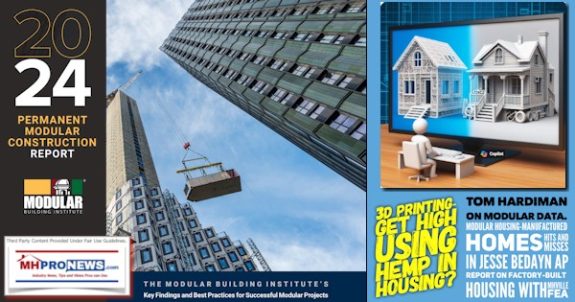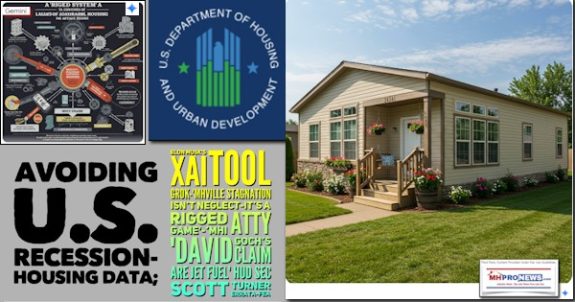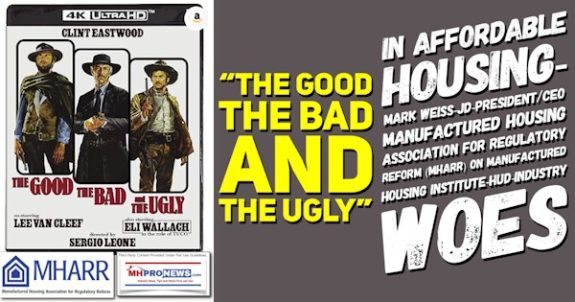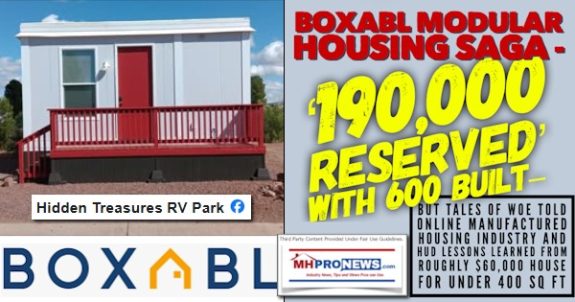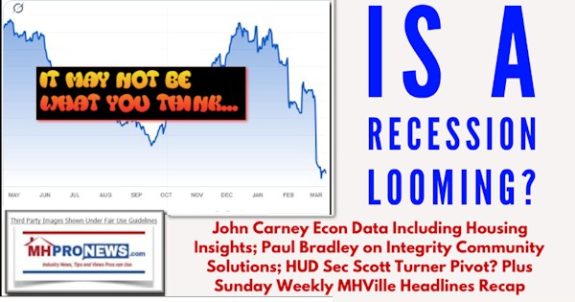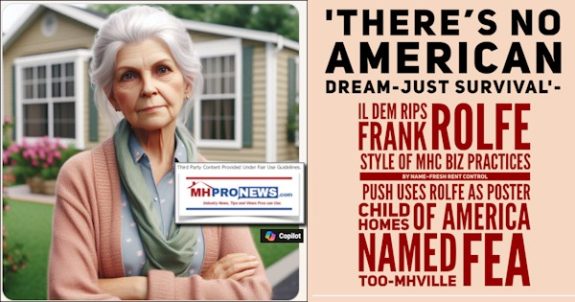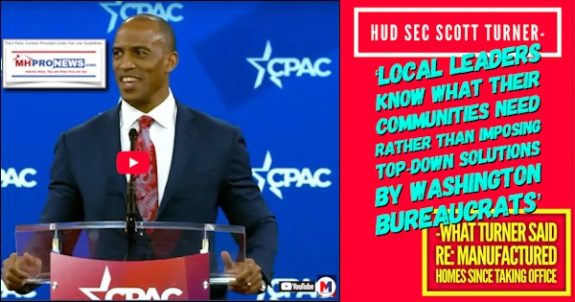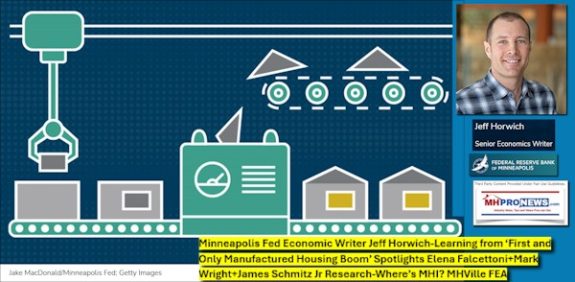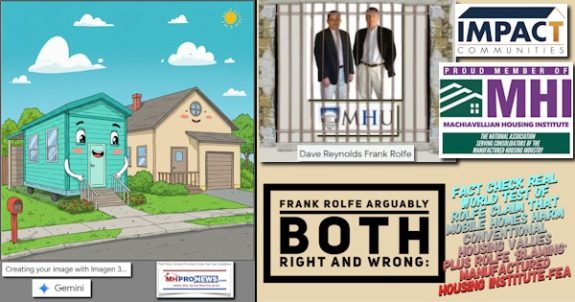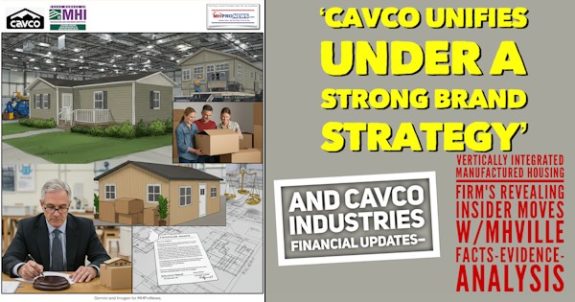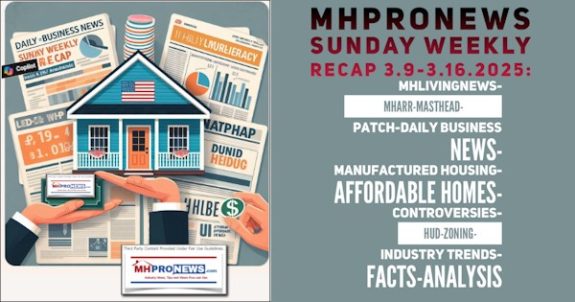MHI Dodd-Frank CFPB Activities Update
MHI Prepares for Lame Duck Session of Congress
Regardless of the outcomes of the November 6th Presidential and Congressional elections, the House and Senate are guaranteed to return post-election to continue work on a number of tax, appropriations and spending issues.
It is unclear what Congress’s specific agenda will be or the length of time Congress will remain in session—both of which will be determined after November 6th. However, MHI is continuing its work to identify opportunities to move legislation (H.R. 3849 & S. 3484) that would provide targeted regulatory relief to the manufactured housing industry.
Significant support is still needed from MHI members to contact their Senators and Representatives and urge them to co-sponsor this important legislation. There are a number of states, where there is a substantial manufactured housing presence, whose Representatives and Senators have not yet co-sponsored either measure (click here to view a copy of MHI’s action alert and issue brief on the bill).
In addition, given the fluid nature of the lame duck session, MHI members may be asked to mobilize quickly on these issues and on relatively short notice. Passage of legislation and promulgation of regulations that minimize the corrosive impacts the Dodd-Frank and SAFE Acts have on the industry’s ability to serve the manufactured housing market remains a top priority for MHI. Ultimately, MHI’s ability to successfully reverse course on these issues will be determined by the willingness of stakeholders throughout the industry to become actively engaged.
CFPB Update FCRA Requirements
The CFPB recently issued new regulations, which become effective January 2013, regarding the paperwork employers must use to notify employees or prospective employees about where they may obtain information regarding their rights under the Fair Credit Reporting Act (FCRA).
The Federal Trade Commission (FTC) currently holds authority for FCRA enforcement. However, beginning 2013, that authority will be transferred to the CFPB. For employers, the change applies specifically to the ‘Summary of Your Rights Under the Fair Credit Reporting Act’ form that employees are provided by their employer/prospective employer if that employer is conducting a credit check on them.
To view the CFPB’s 2013 version of the ‘Summary of Your Rights Under the Fair Credit Reporting Act’, click here.
It will replace the current FTC version, which can accessed by clicking here.
States Opposing National Charter for Payday Lenders
A bipartisan coalition of more than 40 state attorneys general (AGs) have opposed legislation (H.R. 6139) that would allow nonbank financial services providers, including payday lenders, installment lenders, car title lenders, prepaid card issuers, and check cashiers to obtain a federal charter from the Office of the Comptroller of the Currency (OCC). In opposing the legislation, AGs indicated that the bill would preempt state licensing laws and would establish only minimal consumer protections. The legislation, which was introduced on October 1st, has eight cosponsors and is not expected to receive Congressional consideration this session.
CFPB Issues Examination and Compliance Report
On October 31st, the CFPB released a report detailing problems discovered during its examinations of nonbanks and banks with more than $10 billion in assets from July 2011 through September 2012.
Problems identified in CFPB’s examination report include improper procedures related to credit line increases for credit card holders under 21, inadequate training on fair credit reporting requirements, and violations of mortgage disclosure requirements.
The CFPB has also released an appeals policy for supervised institutions as well as an updated version of the CFPB Supervision and Examination Manual, a field guide used by examiners. Click here to review the report. Click here for a copy of the appeals policy. To access the updated examination manual,click here.
The MHCC Holds First Meeting in 2012
The Manufactured Housing Consensus Committee (MHCC) held its first and only meeting of 2012 on October 22nd – 25th to consider a number of recommendations for changes to the Manufactured Housing Construction and Safety Standards Program. HUD intended to have two meetings in 2012 but problems with the approval of a new contract for the Administering Organization, the National Fire Protection Association, resulted in a hastily arranged fall meeting in Arlington, VA. All but three of the 21 members were in attendance. Representatives from HUD included the Deputy Administrator of the HUD Manufactured Housing Program, the HUD engineering staff, and a representative from HUD’s office of General Council.
MHI was surprised and disappointed that higher ranking officials who oversee the program from the Department’s Office of Regulatory Affairs were not in attendance at any time during the meeting.
The Committee worked over two days to conclude work on all outstanding items before the Committee and to consider several new issues. This is despite the frustration voiced by MHCC members and MHI over HUD’s failure to implement dozens of recommendations of the MHCC over the last four years or more.
Highlights of the Committee Recommendations
Southern Yellow Pine Design Standards – By a 15-2 vote, the MHCC recommended that HUD delay implementation of the National Design Specification (NDS) for Wood for 2×2 and 2×4 southern pine lumber, effective January 1, 2013, until such time that it presents the MHCC with a proposal for changes to the existing standards as required by law, or until such time that HUD issues an emergency rule under Section 604(b)(5) of the Manufactured Housing Improvements Act of 2000. This is consistent with MHI’s petition to HUD earlier this year, and with MHI’s testimony before the committee.
Hinged Roof Assemblies – The MHCC voted 15-2 to recommend that HUD withdraw requirements for Alternative Construction Letters for certain types of hinged roofs designed for Wind Zone I until HUD clarifies current regulations regarding the on-site installation of hinged roof assemblies known as “double hinged” and “ridge box or peak cap” assemblies. The industry argued that such hinged roof assemblies do not need AC letters because they are constructed in the factory and are part of the “close–up” requirements under the installation standards, 3285,801(f). Members argued that methods for completing the installation of such homes are much less complicated than many multi-section home “close-ups.” These types of assemblies are common practice in the industry, and installers are trained and certified to complete these types of installations.
Wind Design Standards – The MHCC voted 17-0 to recommend that the reference standards of the American Society of Engineers (ASCE 7) wind design standards be updated to the 2005 version from the 1995 version, and the existing wind speed design requirements in the HUD Code be adjusted accordingly. However, the committee did not recommend any code changes regarding design requirements for wind pressure. It voted to maintain the current three wind zones as opposed to four. The new wind safety recommendations are the result of many hours of work by an industry led task force that included HUD and members of the ASCE-7 committee, who concluded that any new requirements beyond what the MHCC recommended would not be cost beneficial.
Indoor Air Quality – The MHCC concluded action on pending recommendations debated over the last four years, to improve ventilation and indoor quality in manufactured homes. In a unanimous vote, the MHCC recommended that the HUD Code provide for the voluntary use of ASHRAE 62.2, Ventilation and Acceptable Indoor Air Quality in Low-Rise Residential Buildings. In a change supported by MHI, the Committee voted to amend existing regulations to provide more flexibility in the types and size of ventilation systems that may be utilized to ensure adequate ventilation. (In a related issue, see information below on the GAO report).
Other MHCC Actions
In other actions, the Committee added new testing and certification requirements for certain types of vinyl siding; provided a new reference standard for Medium Density Fiberboard (MDF); updated and clarified language regarding construction methods; tabled a proposal regarding alternative foundation designs; rejected a site drainage proposal; rejected updated testing and certification requirements for windows and sliding doors; and referred new issues to MHCC subcommittees regarding water heaters.
Highlights of HUD (Designated Federal Officer) Report and Comments to MHCC
Status of MHCC recommendations pending at HUD
• Final Rules for the proposed 2nd set of updates to the standards, changes to roof truss testing, and changes to 3282, Subpart I, are in Departmental Clearance.
• A final rule for On-Site Completion of Construction is still being developed by HUD staff.
• HUD is still working to develop a proposed rule on a proposal developed by MHI regarding ground anchor testing. HUD is also working on changes to the regulations regarding Primary Inspection Agencies.
MHCC recommendations need a cost benefit analysis
HUD’s Designated Federal Officer (DFO), Henry Czauski, reported that the MHCC/DFO must present to the committee its recommendations with an economic cost/benefit analysis. The recommendations must be in a format consistent with the Administrative Procedures Act (APA) regarding proposed rules and should include a preamble.
Manufacturers need to adhere to regulations regarding Alternative Construction
During discussion of hinged roof designs and Alternative Construction (AC) letters Mr. Czauski noted that there have been numerous instances where manufacturers are not following the regulations under 3282.14 regarding Alternative Construction. If the industry members demand a timely response it is imperative that complete information is provided and regulations regarding inspections, labeling and reporting be followed.
DOE has not communicated on energy efficiency proposals
In response to a question by a committee member, HUD reported that it has had no recent conversations with the Department of Energy regarding energy efficiency standards, although the law requires it, and a recent Congressional directive, sought by MHI, directs DOE to also consult with the MHCC.
Highlights of MHI’s Public Remarks to MHCC
MHI staff provided the following public testimony during each of the three public comment periods:
• Recommended that the MHCC consider HUD’s inappropriate action regarding enforcement of the new design standards for southern pine lumber.
• Urged the committee to review and comment, if necessary, on the recent and pending changes to the NDS standard for southern pine lumber.
• Recommended that the MHCC review HUD’s guidelines for quality assurance under the procedural and enforcement regulations and codify the guidelines.
• Expressed concern about lack of transparency and timely action by HUD and the MHCC on MHCC recommendations.
• Thanked HUD for recent actions regarding preemption and the City of Richland, Mississippi.
• Announced that MHI is working on an industry-based energy efficiency standard and hopes to bring it before the MHCC early in 2013.
GAO Report Published on Indoor Air Quality to Coincide with MHCC Meeting
Coincidently, related to MHCC’s recommendation on indoor air quality, the Government Accountability Office (GAO) issued a report entitled “Manufactured Housing Standards – Testing and Performance Evaluation Could Better Ensure Safe Indoor Air Quality” (available atwww.gao.gov/products/GAO-13-52.) The report was requested by several members of Congress last year to examine indoor air quality standards for manufactured housing.
The report’s key findings conclude that some provisions of the HUD Code provide a lower margin of safety against a carbon monoxide exposure incident than those for site-built homes. The report concluded that the primary reason for the differences in ventilation standards for manufactured homes and site-built homes is that the HUD Code has not been updated and has not kept pace with standards tied to ventilation and air quality for site-built homes. This is despite recommendations by the MHCC in 2009 and 2010 to update various ventilation standards and carbon monoxide requirements. The GAO report is consistent with MHI’s position that the HUD Code, to remain viable, must be updated.
Suggested Minimum Procedures if a Company Determines the Anti-Money Laundering and Suspicious Activity Reporting Regulations Do Not Apply to the Company
MHI and several private companies within the industry have provided guidance to the industry on how companies can comply with the Financial Crimes Enforcement Network (FinCEN) rule on Anti-Money Laundering (AML) and Suspicious Activity Reporting (SAR). At its recent meeting in San Antonio, the Federated States Division reviewed suggested minimum guidelines for companies that determine that the AML SAR rule does not apply to their business operations. These guidelines were developed with assistance from Jess Maxcy and the California Manufactured Housing Institute, and it was recommended that the guidance be posted on the MHI Web site. Click hereto review the guidance.
In summary, if a company performs any of the actions or activities of a residential mortgage lender and/or originator, (see the list of seven activities in the guidance document and/or the AML template on the MHI Web site) the company is covered by the FinCEN rule. If a company does not perform any of the activities, at a minimum the company should:
• Establish a policy, in writing, stating that you and/or your company do not AND the company employees shall not engage in residential mortgage loan origination or lending;
• Place a signed copy of receipt and understanding of the policy and the seven impermissible activities in each relevant employee’s personnel file;
• Post a notice detailing the company’s policy in the office/display area; and
• Never perform, or permit performance by your employees, any of the impermissible activities.
To make a determination about the applicability of the AML SAR regulations to your business, you should read the AML SAR regulations (click here to review information posted on MHI’s Web site). Also, you may wish to consult with an attorney qualified to advise you on issues related to the AML SAR regulations and your business policies and procedures.
Sandy Highlights the Need for a Disaster Plan
The severity of damage from super storm Sandy reminds everyone of the importance of having a disaster plan. While it is important to have a business continuity plan to ensure that your business can survive a disaster, how will the community (or communities) you own or manage get through such a disaster?
Emergency management experts recommend that manufactured home communities have a resident’s disaster planning committee. The purpose of this committee is to work with the community management to develop a plan, to develop an emergency notification system for the community, to provide resident training and education on disaster response, and to identify residents that have special skills that may be required such as nurses, paramedics or others that could provide basic medical assistance.
While hurricanes and floods generally have advance warnings other disasters, such as tornadoes or flash floods, may happen very quickly with no warning. The disaster plan should address both types of scenarios. You can help educate your residents about the distinction between an immediate emergency and an evacuation. For example, where would you direct your residents in the event of a tornado warning? If the community has multiple exits, which sections of the community should use which exit and in what order? What would happen if an exit was blocked?
Another element of the disaster plan is to help your residents “be ready.” When a resident moves into the community, include a copy of the current disaster plan in the “welcome packet” and let the new resident know that your community is serious about preparedness. Checklists of recommended supplies can also be included. In fact, checklists for individuals (or family) could be posted to your web site, available for pick-up at a community center, or e-mailed in advance of an impending storm. Helping your residents be prepared is just one more way of maintaining good resident relations.
Cost is no reason to avoid having a responsive disaster plan. Local agencies frequently offer free disaster planning assistance. First responders, such as fire and police departments, offer community outreach programs to help businesses (and families) prepare for such events. Organizations such as the American Red Cross also have tips, tools, and assistance for developing a disaster plan. Finally, there are many free resources available atwww.ready.gov which is the web site for the Federal Emergency Management Agency. Be sure to take advantage of these no-cost resources to improve your community’s safety!
Having a responsive disaster plan may not prevent damage or destruction. But, in times of crisis, it is a comfort to be ready, to know what to do, and to help people. Even if you already have a plan, a super storm like Sandy is reason to review it. If you do not have a disaster plan, a super storm like Sandy is reason to build one!
MHI Provides National Policy Overview to New York Housing Association
On October 25th MHI Vice President of Government Affairs Jason Boehlert provided a legislative, regulatory and political update during the New York Housing Association’s annual conference. During the opening session, Boehlert provided updates on MHI’s efforts to reform portions of the Dodd-Frank and SAFE Acts to ensure that access to credit needed to purchase manufactured housing remains available. He also provided an overview of the coming Congressional and Presidential elections and implications for the manufactured housing industry.
About the RVIA’s efforts on changing some language in the HUD Code for Manufactured Housing







